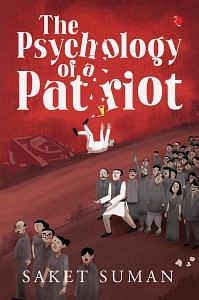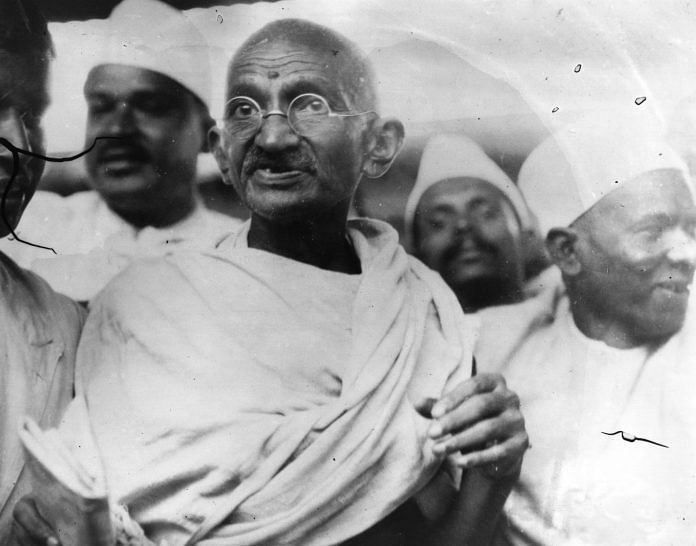A student of St. Mary’s High School in Pune was on a sublime quest in the 1940s as it was the most exciting time in her life so far. Every day after school, she would cross the street with a bunch of friends and go to Dr Mehta’s Nature Cure Clinic, where Gandhi held his prayer meetings. The clinic was not very far from her home and so she went quite often to listen to Gandhi. It was almost customary for the crusader of India’s non-violent freedom movement to address such gatherings and spread his messages. Hymns of communal harmony would be sung at these gatherings and Gandhi would call upon his fellow citizens to accept each other and work collectively.
Nonetheless, the young girl’s father was an army doctor and he was worried that his daughter attending the meetings of the man who was spearheading the Indian independence movement could have repercussions on his job. But the little girl cared the least as the entire mood at that time was tremendously exciting. ‘We did not know what it was all about because one was too young to really understand it fully. But one knew that something very substantial was happening and one was aware that a major change was about to come,’ she recalls.
One day, she managed to get an autograph of the Mahatma and just after Bapu had signed it, he said something, ‘Yeh resham ke kapde pehne hue hain? (Are you wearing silk?)’ ‘Yes,’ she replied. Gandhi looked at her closely and then said: ‘Never wear silk or anything made in the mills, you must always wear khadi. So, go back now and tell your parents to get you khadi clothes and wear only clothes that are made of khadi.’
Also Read: That Muslims enslaved Hindus for last 1000 yrs is historically unacceptable: Romila Thapar
She would go on to become one of the most reputed, but equally controversial, historians of India—Romila Thapar. She was still a child, but Gandhi’s words had touched her. When she returned home that night, she told her parents that she must completely overhaul her wardrobe from then on. Her mother was annoyed. ‘Here she goes with another fangirl idea,’ she said. But her father understood. ‘Look, forget it. Get her two salwar kurtas made of khadi, she will wear them for two months and then she will get over it,’ he told her mother to settle the issue.
‘And that’s exactly what happened,’ Thapar recalls. This awe-inspiring meeting at such an early age with the man who would later become the Father of the Nation is etched permanently in Thapar’s mind. In 1947, she was in the last year of her schooling. There was excitement everywhere, not because it was the final year of school but because the colonial rule in India was soon to end and a new dawn waited ahead.
‘My last year of school was 1947. It was an experience of tremendous excitement because one was in one’s teens and the whole conversation around was the national movement and the coming of Independence and how things would change and one was sort of waiting for something dramatic to happen, which would lead to independence taking place,’ she recalls.
With nationalism at its peak and independence of India fast approaching, most conversations that young Romila had during those days were centred around the national movement and national leaders, and the events that were taking place at that time. ‘There were many more complaints about the British rule than there had been before because people were a little quiet before that. But as soon as the idea of independence approached and it soon became a reality, then people started speaking much more,’ she says. It was the excitement of building a new society.
‘The conversations at the dinner table at home were about the new country and what would be the expected changes in various areas after Independence and what would happen after the change.’
Also Read: Why Right-wingers and lapsed liberals hate Romila Thapar, the mother of history in India
About three weeks before 15 August 1947, the day India became independent, Thapar was called by Sister Superior of her school.
‘You are one of the Indian prefects and we would want you to be present on the 15th,’ Sister Superior told her. ‘What we would like you to do is bring down the Union Jack and put up the Indian flag, plant a little tree to mark the occasion and then make a speech.’
Everything else seemed exciting for young Romila but not making a speech.
She had participated in school debates and other similar functions, but this was going to be different. She had to make a speech and the entire school, along with guardians and visitors were going to be present. At first, she resented it.
‘Make a speech? What am I going to say?’ she asked.
But Sister Superior insisted that she had to do it—a speech of about 15 minutes.
‘For the next three weeks, I went around thinking what I was going to say! It was a frightening thought, the entire school, all parents, friends and everybody was going to be there. It was going to be a big occasion. I remember getting more and more desperate about what I was going to say till I went to have a chat with my favourite teacher, who happened to teach literature and history,’ adds Thapar.
She was advised to ‘just sit down and think about the conversations that you have with your friends about the coming of Independence. What do you expect from Independence? And just talk about that’.
And then finally, 15 August 1947 arrived. A new nation was born and Thapar delivered her first speech. She recalls that she spoke about two primary things. One was about the kind of society that ‘we were going to have after Independence’ because the British were not going to be there and therefore the entire living pattern was going to change. The second thing that she spoke about was ‘how are we then going to adapt’ to all the changes that were happening around at that point of time.
This was how a young Indian looked at the coming of Independence. It was a great moment, a tryst with destiny, as Pandit Jawaharlal Nehru, independent India’s first prime minister, described in his famous speech at the stroke of midnight. But the culmination of the prevalent communal hatred resulted in the partition of India and tore a timeless civilization into two parts: India and Pakistan.
Also Read: Independence celebrations didn’t interest Gandhi. The National Flag’s design did
But then, 30 January 1948 was just another day. Romila Thapar was young and she was still living in Pune. All of a sudden, she sensed strange chaos in the air, steeped in some kind of confusion. She could not comprehend what was happening around her as all she could hear was everybody asking one another: ‘Do you know what happened? Did you hear about what happened?’
People put on their radios and found out that Gandhi had been assassinated. Thapar says her immediate reaction was, ‘My God! Who was it?’
It was a shocking moment for her and even seven decades after the heinous act was committed, she remembers quite vividly the emotions she felt upon hearing the news.
‘One did feel very sad. The little contact that you have with someone creates a tiny bond, a very tiny bond. I just kept sitting there and thinking that he was such a gentle person; why would anybody think of assassinating him? Go up and argue with him, abuse him if you want but don’t assassinate him. I simply could not come to terms with that,’ she contends.
There were already apprehensions about who might have killed him. The memory of Partition was still fairly fresh and people were still very frightened at the thought of any act of violence because the communal riots that had surfaced in its worst forms would come back again. ‘And then they announced that the assassin was actually a Hindu’ and that put an entirely different perspective to it.
 This excerpt from ‘The Psychology of a Patriot’ by Saket Suman has been published with permission from Rupa Publications.
This excerpt from ‘The Psychology of a Patriot’ by Saket Suman has been published with permission from Rupa Publications.



